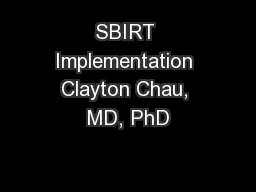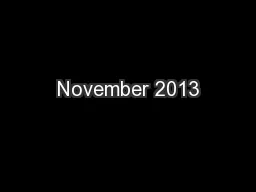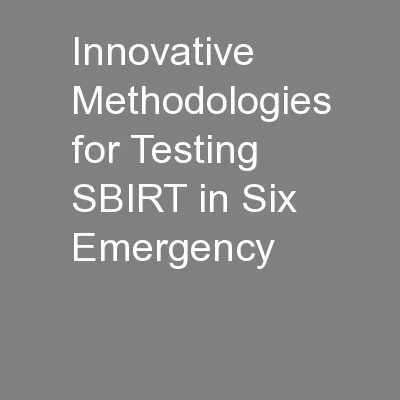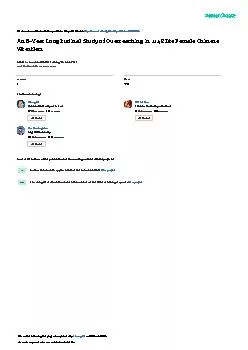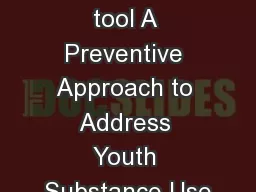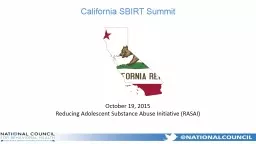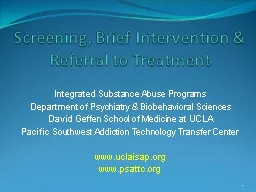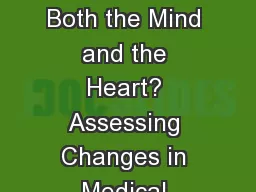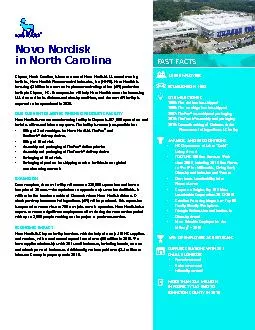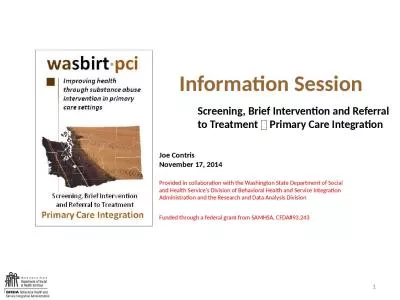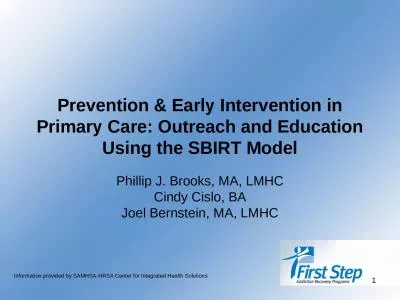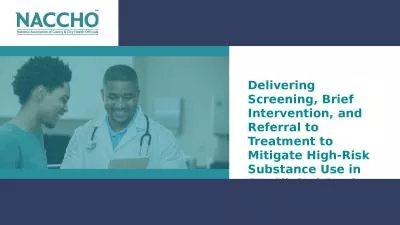PPT-SBIRT Implementation Clayton Chau, MD, PhD
Author : celsa-spraggs | Published Date : 2018-09-25
Medical Director Behavioral Health Services cchaulacareorg Updated 04212014 Goals Definition Understanding the benefit The tool and the process The training requirements
Presentation Embed Code
Download Presentation
Download Presentation The PPT/PDF document "SBIRT Implementation Clayton Chau, MD, P..." is the property of its rightful owner. Permission is granted to download and print the materials on this website for personal, non-commercial use only, and to display it on your personal computer provided you do not modify the materials and that you retain all copyright notices contained in the materials. By downloading content from our website, you accept the terms of this agreement.
SBIRT Implementation Clayton Chau, MD, PhD: Transcript
Download Rules Of Document
"SBIRT Implementation Clayton Chau, MD, PhD"The content belongs to its owner. You may download and print it for personal use, without modification, and keep all copyright notices. By downloading, you agree to these terms.
Related Documents

